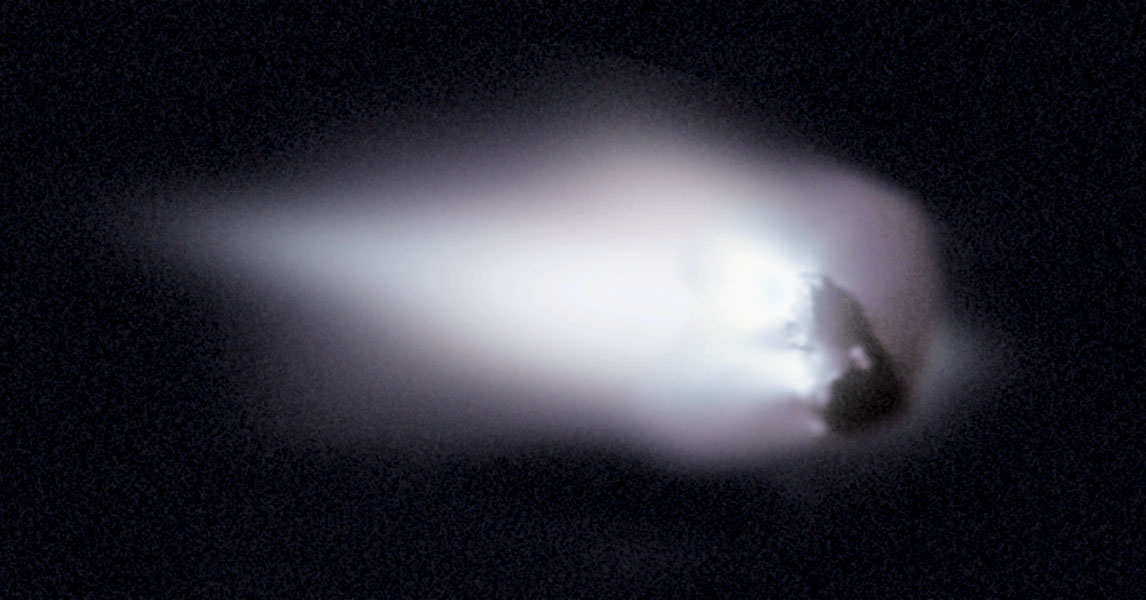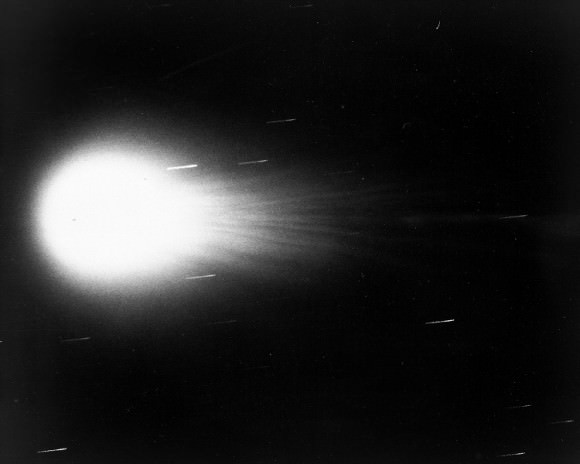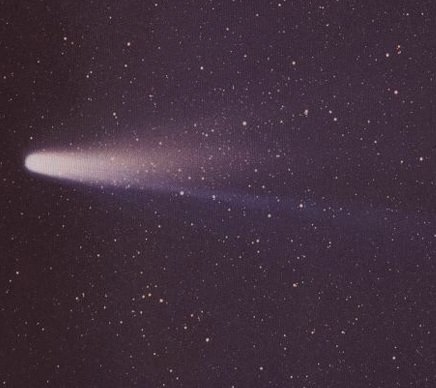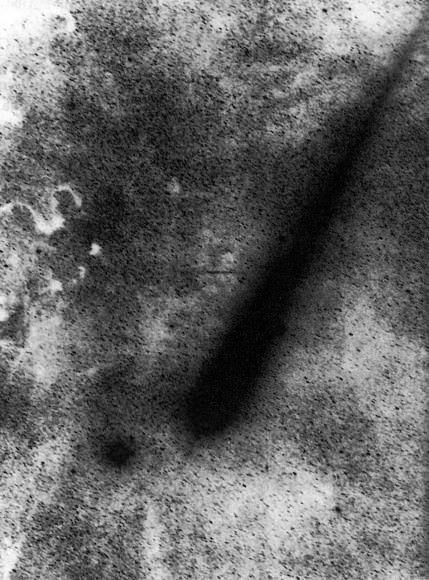NASA missed the chance to visit Halley’s Comet in 1986 when the famed sentinel swung close to Earth, as it does every 76 years. Luckily for history, the Europeans flew Giotto past it on this day (March 13) in 1986, and some other nations sent their own probes.
The full story of NASA’s withdrawal is in Bruce Murray’s Journey Into Space: The First Three Decades of Space Exploration. Murray, the former director of the Jet Propulsion Laboratory, has chapters upon chapters on Halley, but here are some notable highlights.
First of all, there were at least three initiatives for NASA to send a mission to the famed comet. The missions below are in chronological order, and it appears it was only when the preceding one was killed that the next was envisioned:
– Solar sail. This mission would use the power of the solar wind — bits streaming from the sun — to bring a spacecraft within Halley’s gravitational influence. In fact, the spacecraft would stay with Halley as it whisked out of the solar system and would return (long dead) when Halley came back in 2061.
– A rendezvous with Comet Tempel 2. Another idea would see a spacecraft swing close to Comet Tempel 2 but also have a probe that would take a picture of Halley from a distance. NASA also considered splitting the mission in two to meet annual budgetary requirements, but the Comet Science Working Group was cool to the idea. There also was some thought about bringing the Europeans into this mission, but that never worked out.
– Galileo-type hardware. A third initiative had the Jet Propulsion Laboratory envisioning a distant flyby of Halley, basically using similar types of parts that flew in a spacecraft (called Galileo) to Jupiter.
All three of these initiatives fell to budget cuts during the 1970s and 1980s. What caused the budget cuts? In large part, the space shuttle program. To be sure, the shuttle was an impressive piece of hardware, and we are not doubting what it contributed to the construction of the International Space Station and to human spaceflight in general. But it was a large project and in those tight times, something had to give.
Perhaps the most interesting cancellation came in 1979, when NASA administrator Robert Frosch and his deputy went to President Jimmy Carter’s office to plead for the case of two projects: a solar electric propulsion system that would eventually power the Halley-Tempel 2 mission, and the Compton Gamma Ray Observatory (which flew into space, after many delays, in 1991).
Carter, according to Murray, was reading a book on black holes penned by Walter Sullivan of the New York Times. (We’re assuming it’s the 1979 book Black Holes: The Edge of Space, the End of Time.) When presented with the options, Carter said he was “partial to the gamma-ray thing because of this connection with the black-hole problem.”
That signaled the beginning of the end for NASA’s Halley-Tempel 2 mission.





